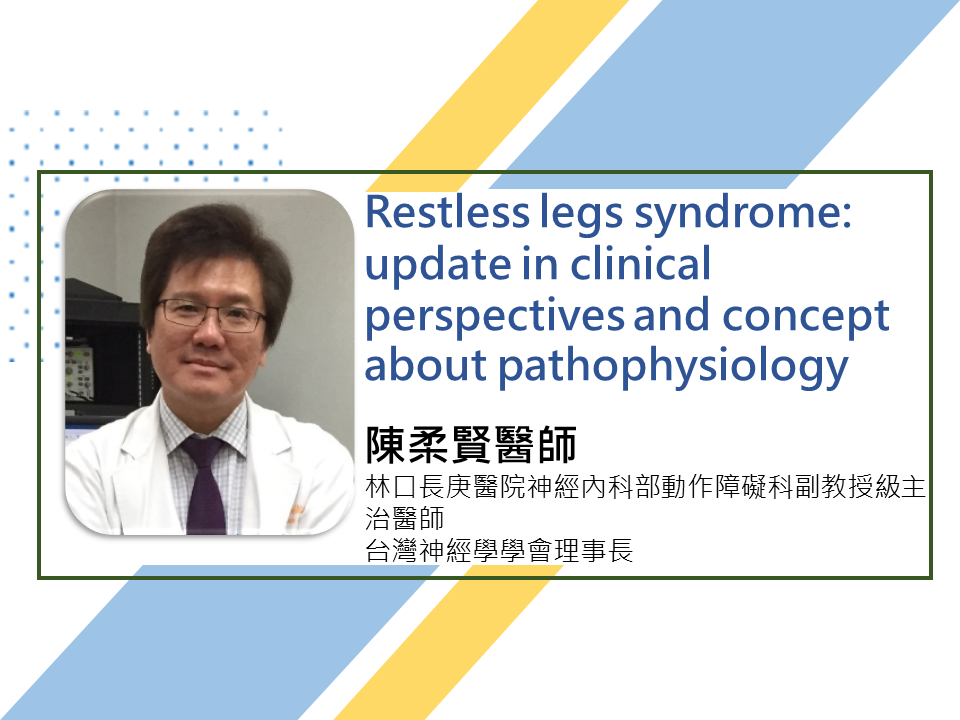
Restless legs syndrome is a neurological condition characterized by complaining of an urge to move the legs (sometimes, possibly also the upper limbs), during the rest period, especially in the evening and nighttime. The prevalence of RLS/WED varies widely; it is highest in North America and Europe, with prevalence ranging from 5.5% to 11.6%, but lower in Asia, ranging from 1% to 7.5%.
There are two types of RLS, the early onset and late onset. And two causes of RLS, the idiopathic and secondary. Today’s talk we will go through these clinical characteristics and clinical implication.
RLS is a multifaceted neuropsychological disease that consists of abnormalities in sensation, motor activity, arousal, and psychology. Although there are no gross structural brain abnormalities in RLS, widespread brain areas are activated, including the pre- and post-central gyri,cingulate cortex, thalamus, and cerebellum. Pathologically, the most consistent finding is striatal iron deficiency in RLS patients. A host of other biological systems are also altered in RLS, including the dopaminergic, oxygen-sensing, opioid, glutamatergic, and serotonergic systems. Polymorphisms in genes including BTBD9 and MEIS1 are associated with RLS.
In my talk today, I will summary the clinical features, pathophysiology and current advances in treatment.